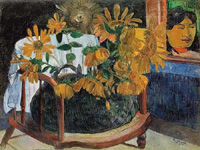
|
Cococubed.com
|
| Nuclear Statistical Equilibrium |
Home
Astronomy Research
2025 Neutrinos From De-excitation
Radiative Opacity
2024 Neutrino Emission from Stars
2023 White Dwarfs & 12C(α,γ)16O
2023 MESA VI
2022 Earendel, A Highly Magnified Star
2022 Black Hole Mass Spectrum
2021 Skye Equation of State
2021 White Dwarf Pulsations & 22Ne
Software Instruments
Stellar equation of states
EOS with ionization
EOS for supernovae
Chemical potentials
Stellar atmospheres
Voigt Function
Jeans escape
Polytropic stars
Cold white dwarfs
Adiabatic white dwarfs
Cold neutron stars
Stellar opacities
Neutrino energy loss rates
Ephemeris routines
Fermi-Dirac functions
Polyhedra volume
Plane - cube intersection
Coating an ellipsoid
Nuclear reaction networks
Nuclear statistical equilibrium
Laminar deflagrations
CJ detonations
ZND detonations
Fitting to conic sections
Unusual linear algebra
Derivatives on uneven grids
Pentadiagonal solver
Quadratics, Cubics, Quartics
Supernova light curves
Exact Riemann solutions
1D PPM hydrodynamics
Hydrodynamic test cases
Galactic chemical evolution
Universal two-body problem
Circular and elliptical 3 body
The pendulum
Phyllotaxis
MESA
MESA-Web
FLASH
Zingale's software
Brown's dStar
GR1D code
Iliadis' STARLIB database
Herwig's NuGRID
Meyer's NetNuc
AAS Journals
2025 AAS YouTube
2025 Listing of 500+ Author Videos
2025 AAS Peer Review Workshops
2025 ASU Energy in Everyday Life
2025 MESA Classroom
Other Stuff:
Bicycle Adventures
Illustrations
Presentations
Contact: F.X.Timmes
my one page vitae,
full vitae,
research statement, and
teaching statement.
Below $\simeq 10^6$ K it is not energetic enough for nuclear reactions. Up to $\simeq 5 \times10^9$ K one uses a nuclear reaction network to follow abundance evolutions. Above $\simeq 5 \times10^9$ K it is energetic enough for forward and reverse reactions to be balanced, and abundances are in a state of nuclear statistical equilibrium (NSE). For Maxwell-Boltzmann statistics, the mass fractions $X_i$ of any isotope $i$ in NSE is \begin{equation} X_i(A_i,Z_i,T,\rho) = {A \over N_A \rho} \omega(T) \left ( 2\pi kT M(A_i,Z_i) \over h^2 \right )^{3/2} \exp \left [ { \mu(A_i,Z_i) + B(A_i,Z_i) \over kT } \right ] \ , \label{eq1} \tag{1} \end{equation} where $A_i$ is the atomic number (number of neutrons + protons on the nulceus), $Z_i$ is the charge (number of protons), $T$ is the temperature, $\rho$ is the mass density, $N_A$ is the Avogardo number, $\omega(T)$ is the temperature dependent partition function, $M(A_i,Z_i)$ is the mass of the nucleus, $B(A_i,Z_i)$ is the binding energy of the nucleus, and $\mu(A_i,Z_i)$, and in the simplest case, $\mu$ is the chemical potential of the isotope \begin{equation} \mu(A_i,Z_i) = Z_i\mu_p + N_i\mu_n = Z_i\mu_p + (A_i-Z_i) \mu_n \ , \label{eq2} \tag{2} \end{equation} where $\mu_p$ is the chemical potential of the protons, $\mu_n$ is the chemical potential of the neutrons. The mass fractions of equation $\ref{eq1}$ are subject to two constraints, conservation of mass (baryon number) and charge, which are expressed as \begin{equation} \sum_i X_i= 1 \hskip 1.0in Y_e = \sum_i {Z_j \over A_i} X_i \ . \label{eq3} \tag{3} \end{equation} Given the triplet of input values $(T, \rho, Y_e)$, an NSE solution boils down to a two-dimensional root find for the chemical potentials of the protons $\mu_p$ and neutrons $\mu_n$. Two constraints and two unknowns.
The tool in public_nse.tbz puts a 47 isotope netrork into its NSE state. More serious NSE calculations could modify this tool to use more accurate nuclear data (e.g., ground state spins and temperature dependent partition functions), to add more elaborate couplings (e.g., Coulomb corrections), and to increase the number of isotopes. Still, the figures and movies below, which accompany this article, suggest this tool gives reasonable results for the assumptions made.

